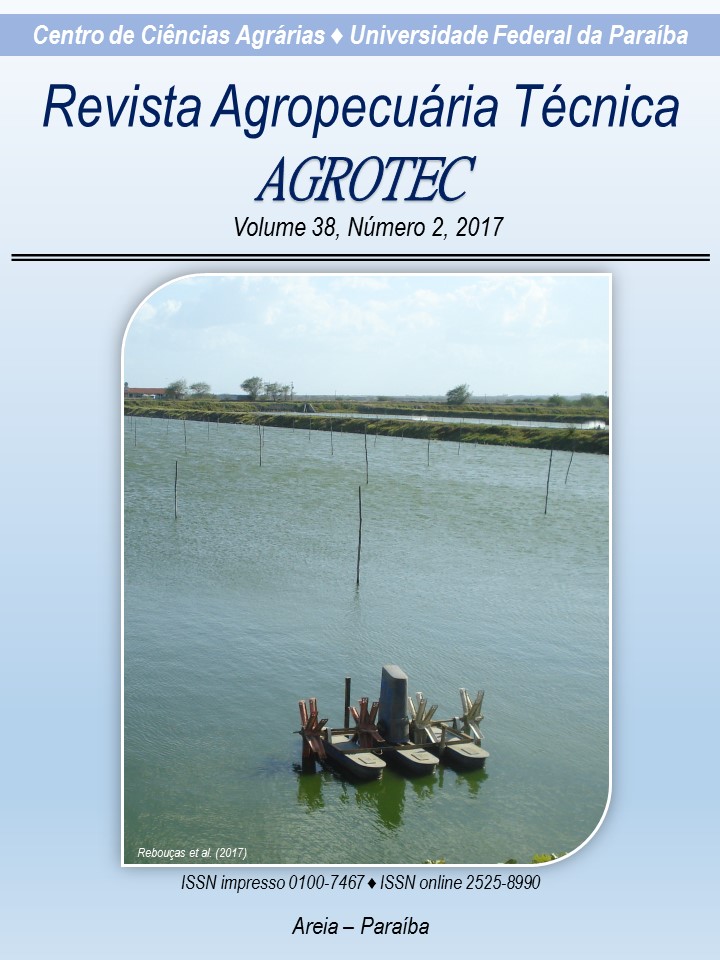Response of common bean to applied water sheets in relation to crop evapotranspiration
DOI:
https://doi.org/10.25066/agrotec.v38i2.33362Keywords:
Phaseolus vulgaris L., Water deficit, Morphology, Agronomic characteristicsAbstract
In Brazil, beans are one of the main staple foods of the population due to high energy potential, standing out in both subsistence production and business agriculture, because it is a crop sensitive to the deficit or excess of water in the soil. The objective of this study was to evaluate the different water sheets applied to the bean crop in relation to crop evapotranspiration. The experiment was conducted in an area belonging to the Federal University of Alagoas/Arapiraca Campus, under field conditions, during the period from August to November 2016, using the cultivar carioca, with plant density of 240 thousand per hectare. Water slides were analyzed according to crop evapotranspiration at five water levels (25, 50, 75, 100, 125%). Leaf area, stem diameter, stem length, number of pods per plant, pod length and pod width were evaluated. The data were submitted to analysis of variance and regression using the F test (p ≤ 0.05) to verify the significance. From the analysis of variance it was verified a significant difference between the treatments in all variables analyzed. Irrigation levels below 100% of crop evapotranspiration negatively affected the analyzed variables, inhibiting growth, with greater intensity in the leaf area and in the number of pods.


